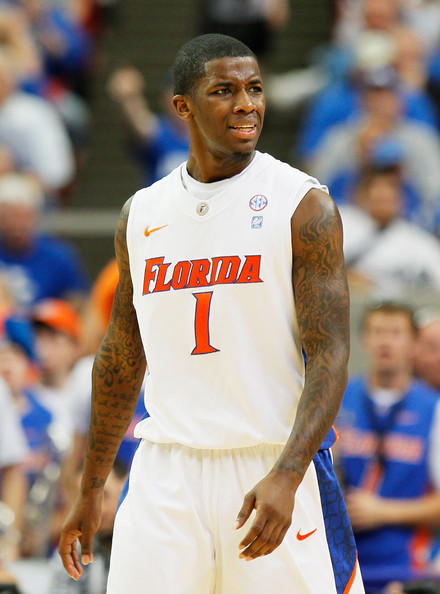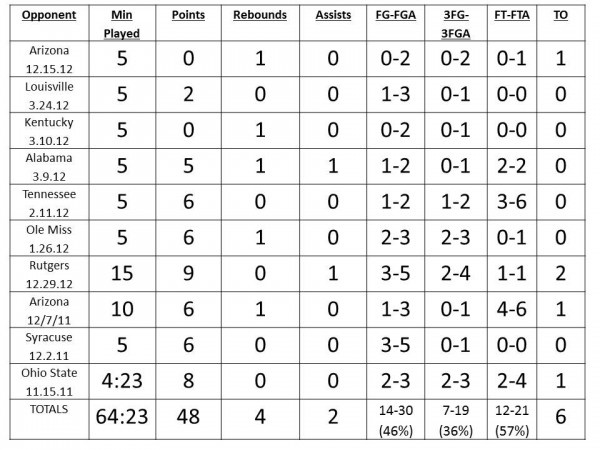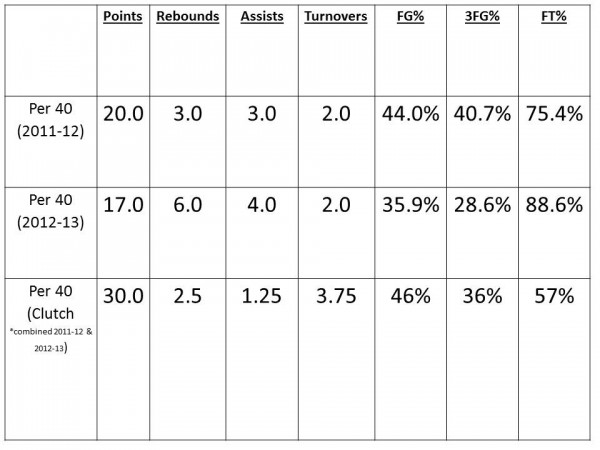An In-Depth Look at Kenny Boynton’s Statistics in the Clutch
Posted by Brian Joyce on December 20th, 2012There was no late game collapse Wednesday night for Florida. The Gators beat Southeastern Louisiana, 82-43. However, besides attendance numbers at the O’Connell Center, the topic of choice for Gator fans remains how frequently Billy Donovan’s squad has failed to close out close games. You may not have stayed up Saturday night to watch the fantastic duel between Arizona and Florida, but by now you’ve seen highlights of a Gator meltdown through disastrous inbounds plays and a host of other errors over the final two minutes of play. The Wildcats went on an 8-0 run during that spurt, calling into question the ability of the deeply talented Gators to come through in the clutch.
If you’re looking for a scapegoat for Florida’s clutch struggles, don’t blame this guy.
The Arizona debacle was the first and only clutch situation for the 2012-13 Gators, but a majority of the current players have been in tight games in the recent past. Florida led by 11 over Louisville in the Elite Eight last year before choking a Final Four appearance away. The Gators had Rutgers down by seven with just over two minutes to go in December 2012, but couldn’t hold on. And when a trend like this emerges, everyone looks for a scapegoat. If it isn’t the coach who takes the heat (hard to question a man with the track record Donovan has), it’s the guy who dribbles the ball off his foot, misses key free throws, or shoots ill-timed three pointers who will take the fall.
But you won’t find the coach blaming one of his players for the loss. Donovan says guard Kenny Boynton will continue to have the ball in his hands in the closing seconds. “I think obviously when you talk about a trend or a theme, it’s a pretty broad-based thing,” Donovan said. “If it was one specific thing where I think ‘Geez, this is really causing us a problem,’ but it’s been a lot of different things.” While some look at Boynton as the problem, an in-depth look at his statistics in clutch situations over the past two seasons leaves that theory slightly unfounded.
First, we defined a “clutch” situation as a game in the second half (or overtime) with fewer than five minutes remaining where the final score was within seven points. We tracked Boynton’s contributions in those situations to determine if he tends to come through when Florida needs him most.
Those numbers might not tell us much, but we further broke down those statistics into per 40 minute averages to compare his clutch performances with his normal output:
It would be easy to split hairs here (rebound and assist numbers are down in the clutch, while turnovers are up), but two significant figures emerge. First, Boynton’s free throw percentage is significantly lower in the clutch than during the rest of the game. However, his scoring output is significantly higher in the closing minutes while shooting roughly the same shooting percentages. So while a career 78 percent free throw shooter dropping to 57 percent in close game situations is a major issue, Boynton is a scoring machine when the game is on the line. It is clear Donovan and Boynton’s teammates trust him with the ball at the end, and will continue to rely upon him when the going gets tough. According to the numbers, his statistics largely confirm the decision to put the ball in his hands.
Florida is down two with 10 seconds to go, who do you want to have the ball? Despite the media questioning the guard’s effectiveness of late, Boynton is the player Gator fans should want taking the shot when UF needs a late bucket. You just better hope the opposing team doesn’t put him on the free throw line.
Brian Joyce is a writer for the SEC microsite and regular contributor for Rush The Court. Follow him on Twitter for more about SEC basketball at bjoyce_hoops.















































